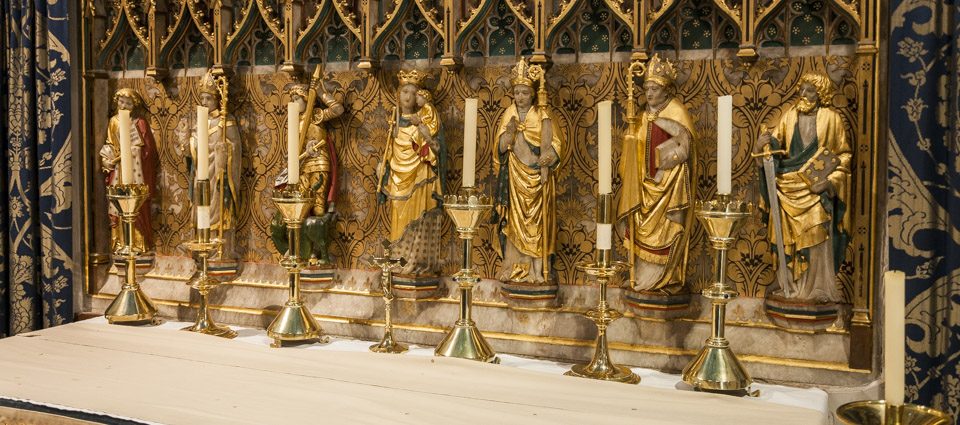Saints in Modern Times
There is a very large and well-known well … at Clynnog, Ffynnon Beuno, “St. Beuno’s Well,” which was considered to have miraculous healing powers; and even yet, I believe, some people have faith in it.
John Rhŷs, Celtic Folklore, 1901, vol. 1, p. 363.
St Cybi’s Well, Llangybi, Caernarfonshire. Photo: Martin Crampin
St Winefride, 1886, St Winefride’s Well, Holywell. Photo: Martin Crampin
The veneration of saints in Wales was suppressed at the time of the Protestant Reformation in the mid-sixteenth century. Figures of saints and relics were destroyed and wall paintings depicting the lives of the saints were whitewashed. Local traditions at churches and holy wells sometimes survived and saints continued to be remembered by recusant Roman Catholics.
In the nineteenth century Roman Catholics were given religious freedom in Wales and the strength of the Anglo-Catholic movement within the Church of England caused statues of saints to be commissioned for churches again. During the twentieth century pilgrimages were revived to former medieval shrines such as Holywell, St Davids and Cardigan.
Saints in Medieval Wales
Lives of the Saints
Verses to the Saints
Genealogies of the Saints

